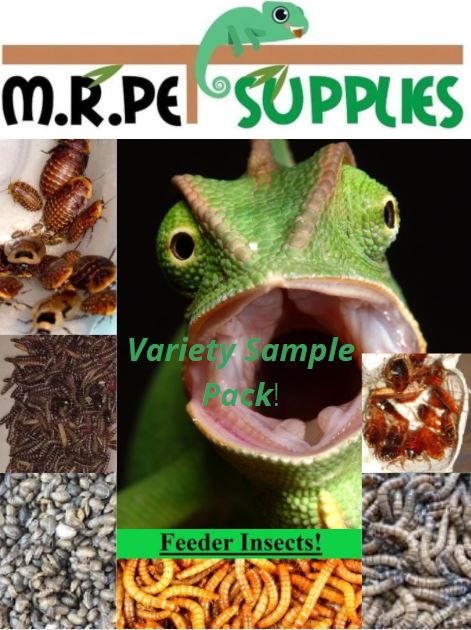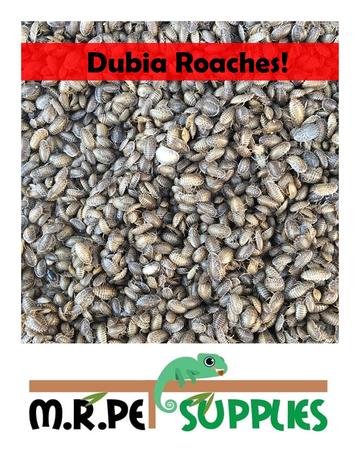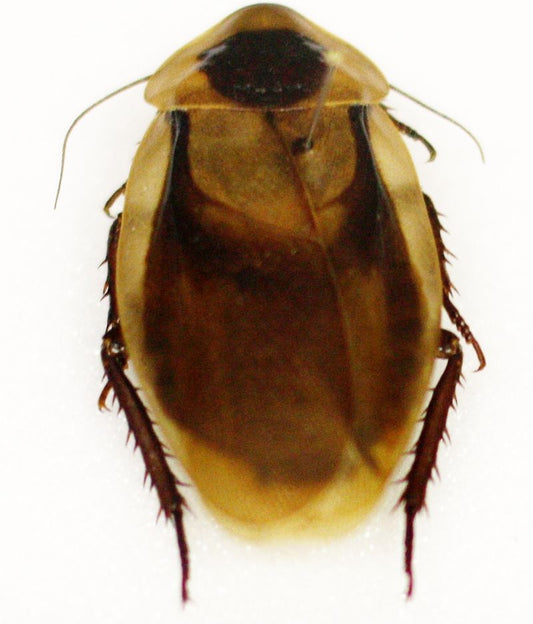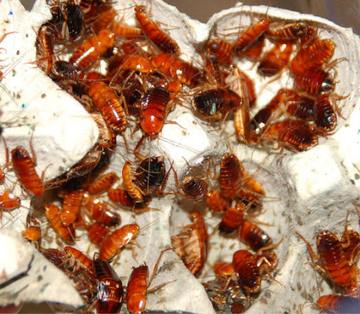Insect Feeders Info & Care

Feeder Insect Care & Gut-Loading Explanation
Feeder Insect Care & Gut-Loading Guide Dubia / Discoid / Madagascar Roaches • Store in dark, ventilated container with egg crates. Ideal temp: 80–90°F.• Feed dry gut-load foods (grains, leafy...
Feeder Insect Care & Gut-Loading Explanation
Feeder Insect Care & Gut-Loading Guide Dubia / Discoid / Madagascar Roaches • Store in dark, ventilated container with egg crates. Ideal temp: 80–90°F.• Feed dry gut-load foods (grains, leafy...

Dubia Roaches: A Natural and Nutrient-Rich Feas...
Dubia Roaches: A Natural and Nutrient-Rich Feast for ReptilesWhat sets Dubia roaches apart is their optimal calcium-to-phosphorus ratio. Calcium is critical for strong bones, preventing deformities and fractures, especially in...
Dubia Roaches: A Natural and Nutrient-Rich Feas...
Dubia Roaches: A Natural and Nutrient-Rich Feast for ReptilesWhat sets Dubia roaches apart is their optimal calcium-to-phosphorus ratio. Calcium is critical for strong bones, preventing deformities and fractures, especially in...

Discoid Roach Info, Blaberus discoidalis
Here is a bit of Information about the habits and a characteristics of the Discoid Roach, Blaberus discoidalis. FUN FACT!Insect Eating Competitions Discoid Cockroaches are also used in insect eating competitions...
Discoid Roach Info, Blaberus discoidalis
Here is a bit of Information about the habits and a characteristics of the Discoid Roach, Blaberus discoidalis. FUN FACT!Insect Eating Competitions Discoid Cockroaches are also used in insect eating competitions...
Superworm Nutritional Values
Here is as complete a list of nutritional values as I could find. Nutritional composition(%) and energy content (Kcal/100g), based on dry matter:Protein – 43.13-46.79Fat – 40.80-42.04Fiber – 9.26-13.00NFE(Carbohydrates)...
Superworm Nutritional Values
Here is as complete a list of nutritional values as I could find. Nutritional composition(%) and energy content (Kcal/100g), based on dry matter:Protein – 43.13-46.79Fat – 40.80-42.04Fiber – 9.26-13.00NFE(Carbohydrates)...

Red Runner Care and Info
Blatta lateralis, or Shelfordella lateralis, the Turkestan Cockroach [1], also known as the red runner,[2] rusty red cockroach,[3] or Red Lat is a small sized species of cockroach which grows to about 1inch in length. These roaches have been raising...
Red Runner Care and Info
Blatta lateralis, or Shelfordella lateralis, the Turkestan Cockroach [1], also known as the red runner,[2] rusty red cockroach,[3] or Red Lat is a small sized species of cockroach which grows to about 1inch in length. These roaches have been raising...
